Top Data Broker Removal Services: Which One Really Protects Your Privacy?
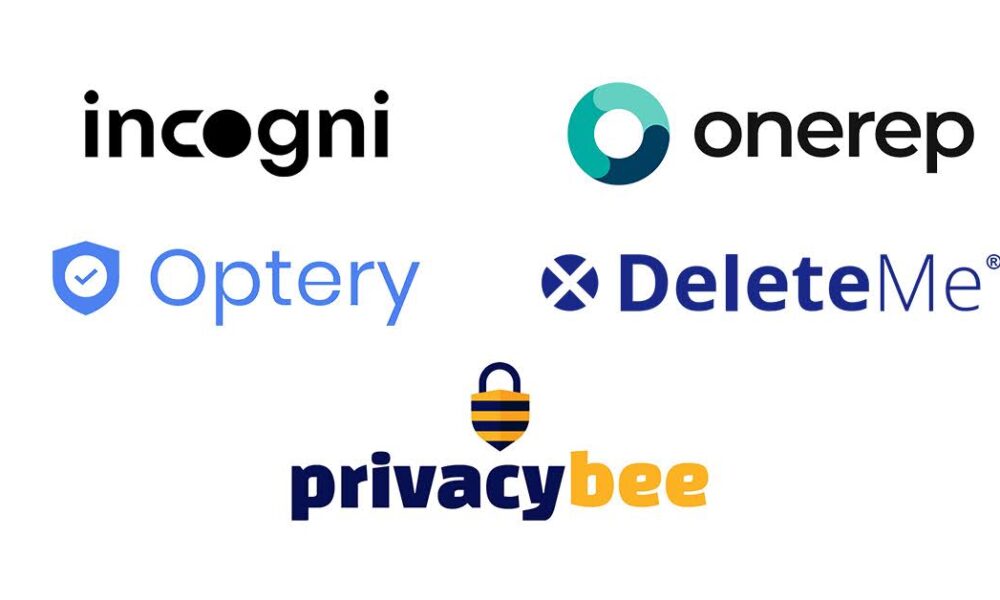
We live in a time when our personal data is treated like currency, moving faster than we can keep track of. Every online purchase, downloaded app, and form we fill out contributes to an ever-growing digital record. Data brokers then buy, analyze, and sell this information for various purposes, including advertising and credit profiling.
If you’ve ever searched your name and found your phone number or address online, you’ve seen just a small glimpse of a much bigger issue. Many data brokers are trading away personal information that doesn’t show up in a simple Google search, making it almost impossible to remove your data manually.
That’s where data removal services come into play. They act on your behalf, reaching out to these brokers to request deletions. Some of them even keep an eye out for your information reappearing, so it doesn’t sneak back into the public domain.
With technology evolving, automation is now replacing manual efforts. Independent assessments are becoming the benchmark for trust. Here’s a look at how the top services stack up and which ones can truly help you feel more secure.
Why Automation Changed the Game
A few years back, privacy protection relied heavily on human effort. Services like DeleteMe would manually request removals from as many public databases as possible, providing before-and-after screenshots to show progress.
Now, services like Incogni have transformed this process. Instead of relying on people, Incogni has created an automated system that reaches out to hundreds of data brokers, keeps track of responses, and resubmits requests as needed.
Think of it like this: one approach clears the mess once, while the other prevents it from coming back.
Quick Comparison
| Service | Automation | Broker Coverage | Verification | Starting Price (annualized) | Best For |
| Incogni | Fully automated | 420+ public and private brokers | Independent Limited Assurance Assessment by Deloitte | $7.99/month | Long-term, effortless data removal |
| DeleteMe | Manual | ~100 public brokers | Internal | $10.75/month | Removing visible listings |
| Optery | Semi-
automated |
300–645 brokers | None | $3.25/month (free opt-out) | Users who like detailed control |
| Privacy Bee | Hybrid | 400–1000 brokers (unverified) | None | $8.00/month | Broader privacy management |
| Onerep | Mixed | 230 people-search databases | None | $8.33/month (free 5-day trial) | Quick visibility cleanup |
The Front-Runners: Who Does What Best
Incogni: Privacy That Runs Itself
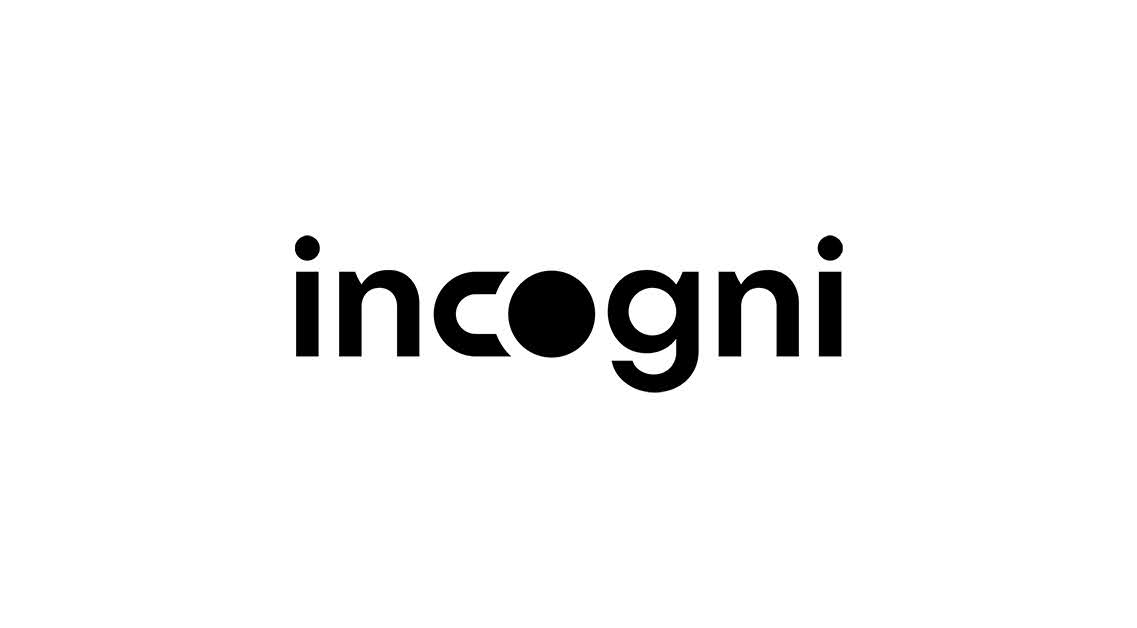
If you want protection but you don’t want to be forced to oversee the process, Incogni leads the way. Once you authorize it, it contacts hundreds of data brokers automatically on your behalf and keeps going in the background, a maintenance-free loop of protection.
Contrary to tools that focus on public-facing sites, Incogni includes private marketing, financial, and recruitment databases that feed spam and profiling systems. Its operations underwent an independent limited assurance assessment by Deloitte, making it the only service with verified transparency.
Even with the basic, cheapest subscription plan, you get all the core features essential for ensuring privacy, not partial tiers. Family and unlimited plans add shared dashboards, unlimited custom removal requests, and faster handling.
DeleteMe: The Original Cleanup Crew

Before automation started changing the market, DeleteMe had defined the category. It still operates on a human model: specialists manually remove your data from around 100 public people-search sites. Then, they send quarterly reports to show progress.
That visibility may be valuable to many users, as seeing proof of removal builds trust. However, it also comes with limits. Because it focuses on public brokers, the cleanup is more surface-level. It’s effective for removing what appears in Google searches, but it won’t be of much help against deeper, unseen databases.
Optery and Privacy Bee: The Power-User Options
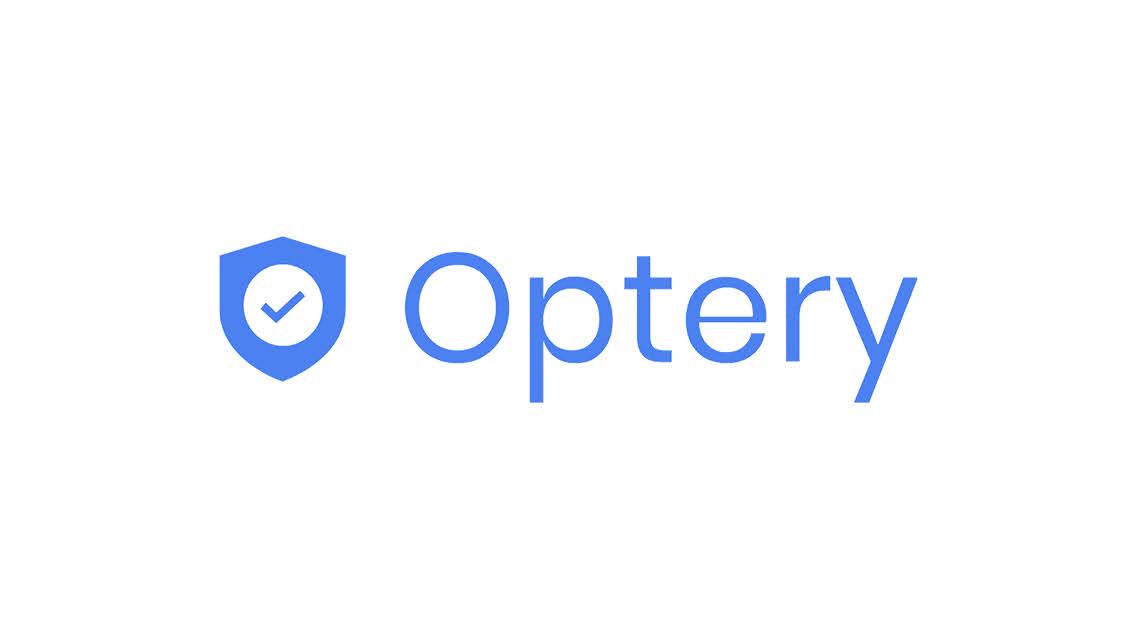
Where Incogni shines thanks to simplicity, Optery trades it for control, which may be a fair deal to some privacy-seekers. Its semi-automated model allows you to check exactly which brokers were contacted and even handle some requests manually through downloadable forms. The base plan covers about 300 brokers, with higher tiers expanding to 645.
For users who like data transparency and some level of control, that’s a major plus. However, it also means the process can demand your attention, and it may not always be optional if you’re serious about your privacy.
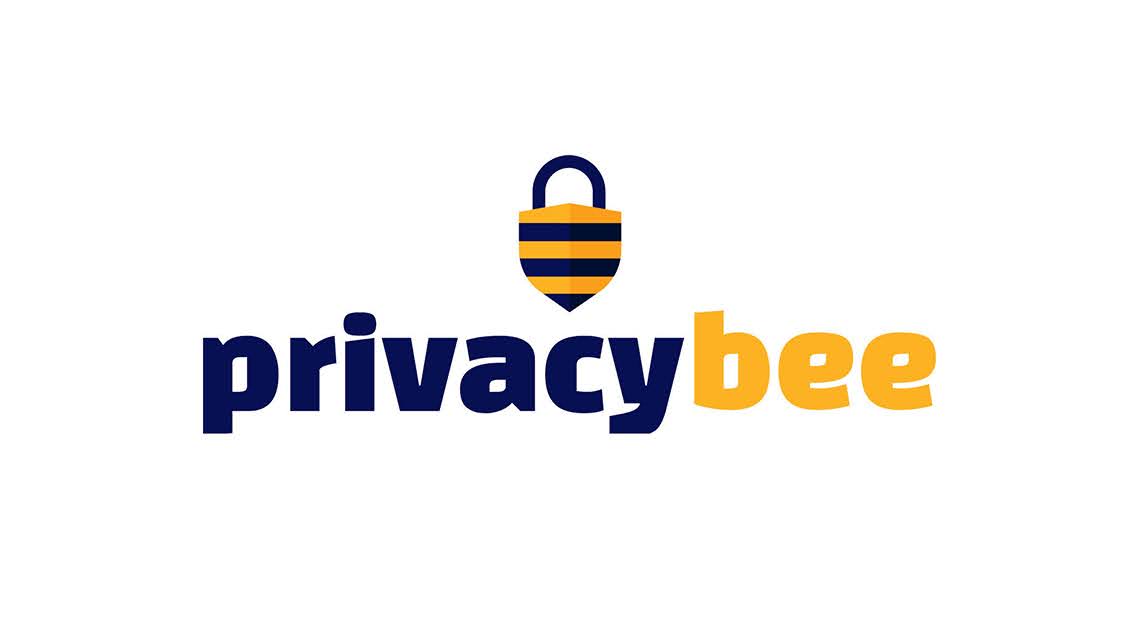
Privacy Bee, conversely, goes a little further. It adds data breach monitoring, identity protection, and marketing opt-out management to its hybrid removal system. Coverage ranges between 400 and 1000 brokers, depending on your plan. The downsides? A higher cost. And there’s no independent verification, so be sure to take the coverage with a grain of salt.
OneRep: A Quick Fix for Public Exposure
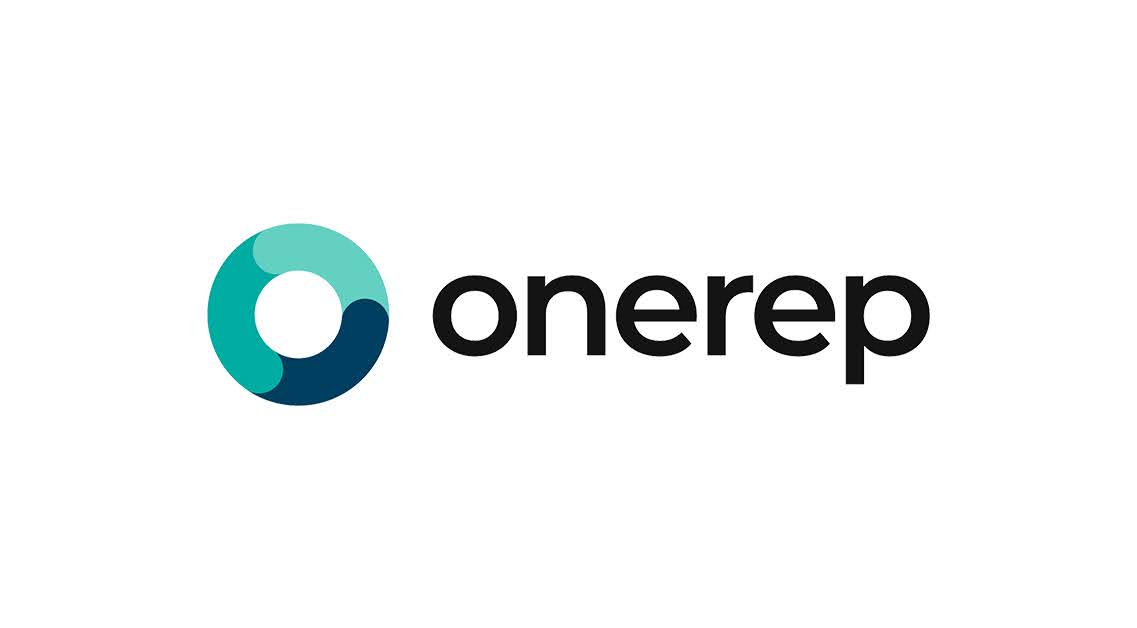
OneRep focuses mainly on one problem: visibility. It automatically removes your personal details from around 230 public databases and keeps checking for reappearances in the future. The dashboard is simple, and setup takes minutes. It’s a fast way to clean up what people see when they Google you – but nothing else, no private broker coverage.
The company’s founder’s former involvement with multiple people-search websites (reported by Krebs on Security in 2024) has also raised some eyebrows in the privacy community.
Still, for users who want fast results but don’t think about private databases, it’s a useful tool.
Choosing the Right Kind of Protection
Here’s how to think about it:
- If you want ongoing protection with minimal effort on your side, choose Incogni.
- If you prefer to see proof and progress reports, DeleteMe may be suitable
- If transparency matters more to you than convenience, go for Optery.
- If you want additional protection tools, Privacy Bee offers the widest range.
- If you only care about public exposure, OneRep does the job quickly.
Each tool fills a slightly different role and will satisfy a different kind of user.
Bottom Line: The Shift Toward Ongoing Privacy
The rise of automated privacy tools was a turning point. What used to be a one-time manual cleanup is now a continuous process that adapts to how fast our data travels.
All five services mentioned in this article can help you take back control, but they have different approaches and offer varying services. DeleteMe and OneRep tidy the surface. Optery and Privacy Bee give you visibility and extras.
Incogni is the one that keeps working after you log out. It’s the closest thing to having a privacy system that actually looks after you, not the other way around.
Incogni vs DeleteMe: Privacy Protection That Lasts

Incogni vs DeleteMe: Privacy Protection That Lasts
If you’ve ever tried to erase your name, address, or any personal details from the web, you probably know by now that it’s not just a matter of clicking “delete.” Too many data brokers collect, handle, and resell your private information to advertisers, risk assessors, and marketing platforms, for example. But you’re not entirely powerless – that’s where services like Incogni and DeleteMe step in.
Both tools promise to contact data brokers and request removal on your behalf. However, while they share the goal, the way they work – and what they actually provide – is very different. Our comparison below looks at how they manage the task in detail to help you choose the right approach.
Quick Comparison: Incogni vs DeleteMe
| Feature | Incogni | DeleteMe |
| Price | From $7.99/month (annualized) | From $10.75/month (annualized) |
| Process | Fully automated, recurring removals | The human team performs manual requests |
| Broker coverage | 420+ brokers | Around 100 |
| Private data brokers | Included (marketing, financial, recruitment, risk) | Not included |
| Custom requests | Unlimited, available right away after signing up for upgraded plans | Limited (40–60 per year) |
| Renewal cycles | Every 60 days (public) / 90 days (private) | Every few months, manually |
| Independent assessment | Deloitte Limited Assurance Report | None |
| Reports | Real-time dashboard + exposure summaries | Quarterly reports with screenshots |
| Support | Email, live chat for all subscribers, and phone only in the Unlimited plans | Email, phone, live chat, form |
Information verified as of October 2025.
Different Strategies, Same Goal
Both Incogni and DeleteMe exist to guard the privacy of your digital footprint, but how they do it couldn’t be more different.
DeleteMe relies on a privacy team that manually contacts public sites like Whitepages and Spokeo to ask them to remove your data. This human-led approach ensures attention to detail, but it’s slower, limited to visible databases, and requires frequent manual updates.
Incogni, by contrast, has entirely automated the process. Once you verify your identity, it contacts over 420 brokers on your behalf, both the public ones that show up in Google and private firms that sell behavioral, financial, and marketing data. Incogni’s system keeps monitoring the web for reappearances of your information, and then resubmits removal requests automatically, meaning your data stays off the market without you even thinking about it.
Scope and Broker Reach
When deciding on a data removal tool, it’s essential to know how many and what kinds of brokers they actually target.
DeleteMe focuses on public listings. It’ll be a good choice if you want to disappear from search results or make your information less visible to strangers and recruiters.
Incogni takes a broader approach. It manages both public directories and private brokers who are responsible for targeted ads, marketing profiles, and consumer risk scores. This wider coverage is especially beneficial when it comes to preventing your data from being redistributed later.
Transparency and Accountability
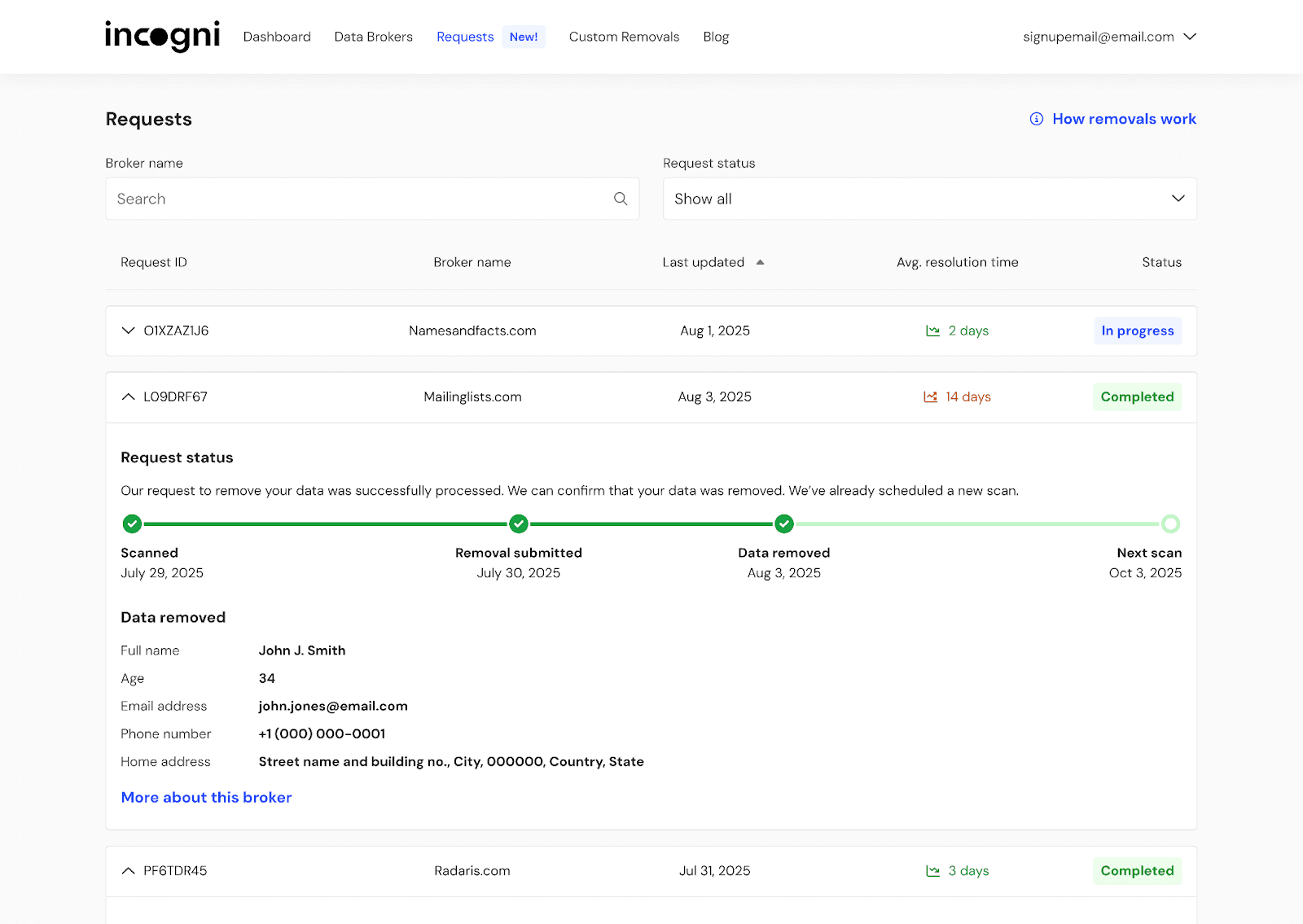
When you trust a company to manage your private data, you deserve to know what’s happening behind closed doors.
DeleteMe provides quarterly reports that clearly display where your data was found and what’s been removed, often including before-and-after screenshots. It’s a solid way to confirm progress, but it doesn’t give you too much insight into the deeper layers of the data broker ecosystem.
Incogni, on the other hand, goes beyond that. Its removal process has undergone independent limited assurance by Deloitte, verifying that everything proceeds as stated. The live dashboard shows current progress, confirmed deletions, and pending actions in real time. The only downside is that private brokers usually don’t provide any screenshots due to internal policies.
Pricing and Long-Term Value
Both providers use a subscription model, but the value you get per dollar differs.
DeleteMe costs about $10.75 per month when billed annually. It covers manual removals from roughly 100 public brokers and quarterly updates. Family options are available, and each additional member increases the total cost.
Incogni starts at $7.99 per month (annualized) and includes all the essentials in the most basic subscriptions – recurring removals, real-time reporting, and both public and private broker coverage. You can upgrade to add family protection or unlimited custom removals, but even the base plan provides comprehensive coverage.
Ease of Use
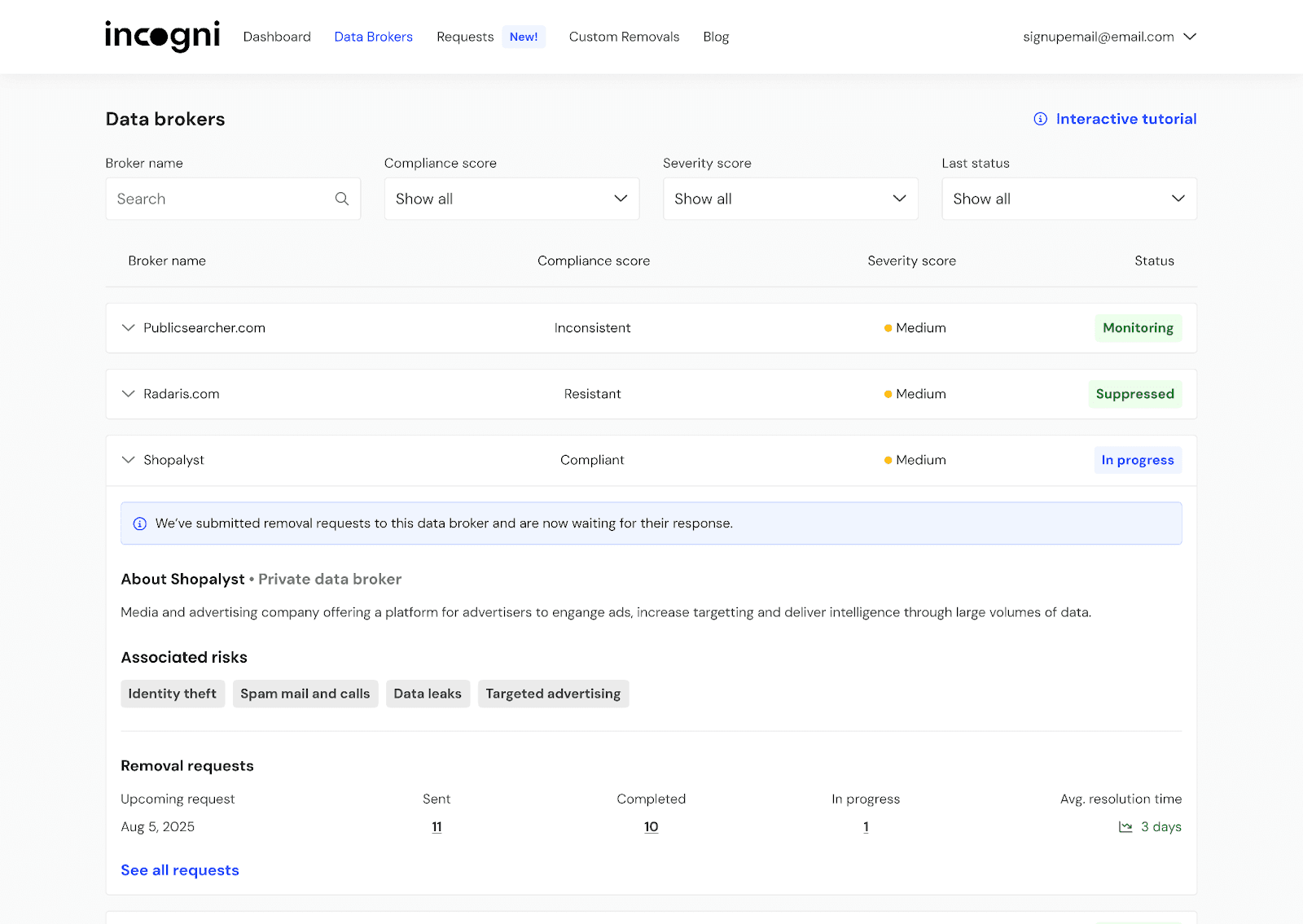
With DeleteMe, you’ll share your personal information once, then simply wait for quarterly updates. It’s incredibly easy to understand, but it’s more like a subscription service you have to check in on.
Incogni, on the other hand, feels like a privacy-guarding machine running quietly in the background at all times. After a quick verification, it starts sending requests and continues doing so indefinitely. You can log in anytime to see updates, but there’s no ongoing effort required from your side.
Choosing Between Incogni and DeleteMe
Different needs call for different tools. Here’s how to determine which provider fits your situation best:
- If you seek privacy without the homework, Incogni is the ideal choice. Its automated engine keeps scanning and resubmitting removal requests across public and private brokers, so you don’t have to think about it after setup.
- If you prefer more manual tasks and insight, DeleteMe might be suitable. Its quarterly reports show tangible proof of progress, but they come at the cost of slower turnaround and limited coverage.
Both tools simplify a process that would otherwise take dozens of hours – the difference lies in how hands-on you want to be.
Final Thoughts: Automation Wins in the Long Run
Both Incogni and DeleteMe share a common goal – helping you take back control of your personal data. However, they offer different means to achieve that.
DeleteMe leans on human precision and visible proof. It’s a familiar, dependable option for cleaning up what’s easy to find online. If your main concern is how your name appears in search results, it does that job well.
Incogni, conversely, is built for people who want privacy to run quietly in the background. It digs deeper, reaching into the private data broker networks that most of us never see; these are the ones that fuel profiling, spam, and targeted marketing. Its automated process means consistent removals, fewer blind spots, and no need for manual management.
So while both tools make online privacy more achievable, Incogni goes further. It turns what’s usually a tedious chore into a continuous system of protection, one that works quietly, reliably, and at a lower cost.
For anyone ready to reclaim their data and move on with their life, that’s a smart trade-off.
Incogni vs Optery
Incogni vs Optery: Which One Makes Privacy Easier?

If you’ve ever tried removing your personal information from data broker websites, you already know what a pain it can be. Endless opt-out forms, email confirmations, and reappearances weeks later – it’s a full-time job no one asked for. Yet it’s hard to simply ignore the issue.
That’s why tools like Incogni and Optery exist. They take over that job, contacting brokers for you to delete your data. But while both share the same goal – protecting your privacy – they go about it very differently.
One takes a hands-off, fully automated approach. The other lets you peek a little more behind the curtain and handle some things more manually. Here’s how they compare.
Incogni vs Optery: Quick Overview
| Feature | Incogni | Optery |
| Prices from… (annualized) | $7.99/month | $3.25/month (free basic scan) |
| Automation | Fully automated | Hybrid |
| Broker coverage | 420+ verified (public and private) | Up to 645 (depends on plan) |
| Verifications | Deloitte Independent Limited Assurance | None |
| Renewals | Automatic every 60–90 days | Manual or partial automation |
| Transparency | Dashboard with tracking and reports | Screenshots, profile links, detailed logs |
| Support | Email, live chat for subscribers, phone for Unlimited subscribers | Email, live chat |
| For what? | Privacy without effort | Visibility and fine control |
(Information accurate as of October 2025)
Automation vs Oversight
The biggest difference between the two is how much work you have to do.
Incogni does everything automatically. Once you sign up and confirm your details, it starts contacting more than 420 data brokers, both public people-search sites and private companies that deal in marketing, financial, and risk data. It also keeps an eye on those brokers, resubmitting requests every 60 or 90 days (depending on broker type) so that your data doesn’t quietly reappear.
Optery, on the other hand, takes a mixed approach. It can send automatic removal requests for some brokers, but others will require your confirmation. It also shows screenshots or links to the listings it finds, so you can see exactly what’s being taken down. That’s great for transparency, but it also means more time spent checking results and confirming actions.
Depth of Coverage
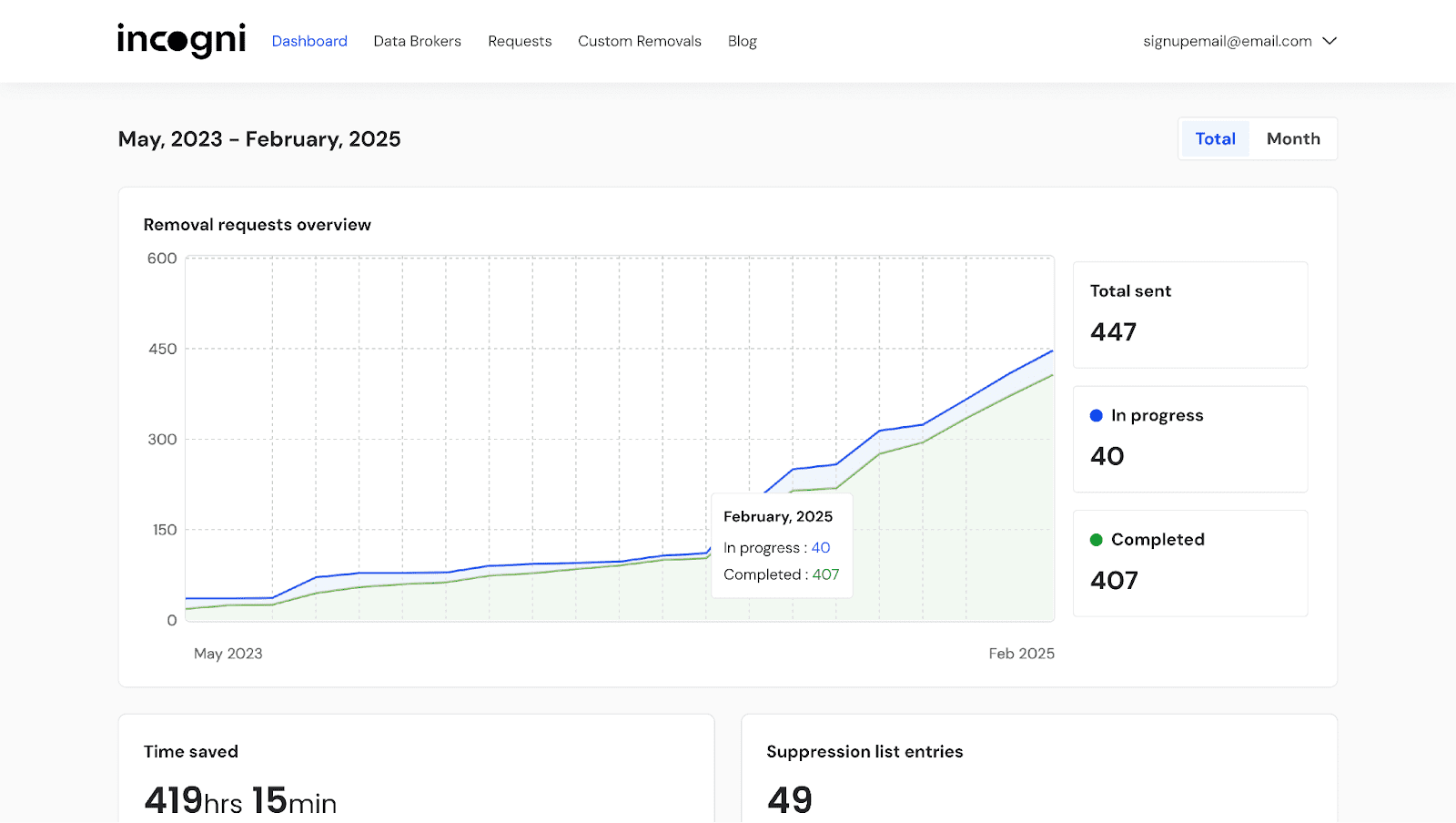
Both tools reach far, but they focus on different layers of the data broker world.
Optery advertises coverage of up to 645 brokers, though the actual number depends on your plan – lower tiers cover fewer. Most of these are public people-search sites that list names, addresses, and phone numbers – listings you can find by googling.
Incogni covers over 420 brokers, and underwent independent limited assurance assessment by Deloitte. The key difference: Incogni’s list includes private brokers: marketing, recruitment, and risk databases that don’t show up in search engines but still trade your information and may pose an actual threat.
So while Optery might reach more sites on paper, Incogni reaches more types of brokers that matter for long-term privacy.
Transparency and Trust
Transparency means different things to each company.
Optery focuses on proof. You can view screenshots, direct links, and progress details for each removal. That’s satisfying if you like to see confirmation that your data was taken down.
Incogni, on the other hand, focuses on accountability. You can track request statuses through a clean dashboard, but its standout feature is its Deloitte Independent Limited Assurance Assessment that confirms Incogni’s system works as promised – something no other major removal tool has. There are no screenshots or other proof, but simply because private brokers often don’t offer that due to internal policies.
In short, Optery shows you the process; Incogni proves that it works.
Pricing and Plans
Optery offers a free plan for basic scanning. Paid plans (starting at $3.25/month when billed annually) unlock more brokers, with top tiers offering up to 645. That flexibility is nice, but it can also mean upgrading often to get full coverage.
Incogni keeps things simpler: full protection, including private broker coverage, starts at $7.99/month (annualized). You don’t need to upgrade to unlock key features, and even the entry-level plan includes recurring removals and real-time progress tracking.
Ease of Use
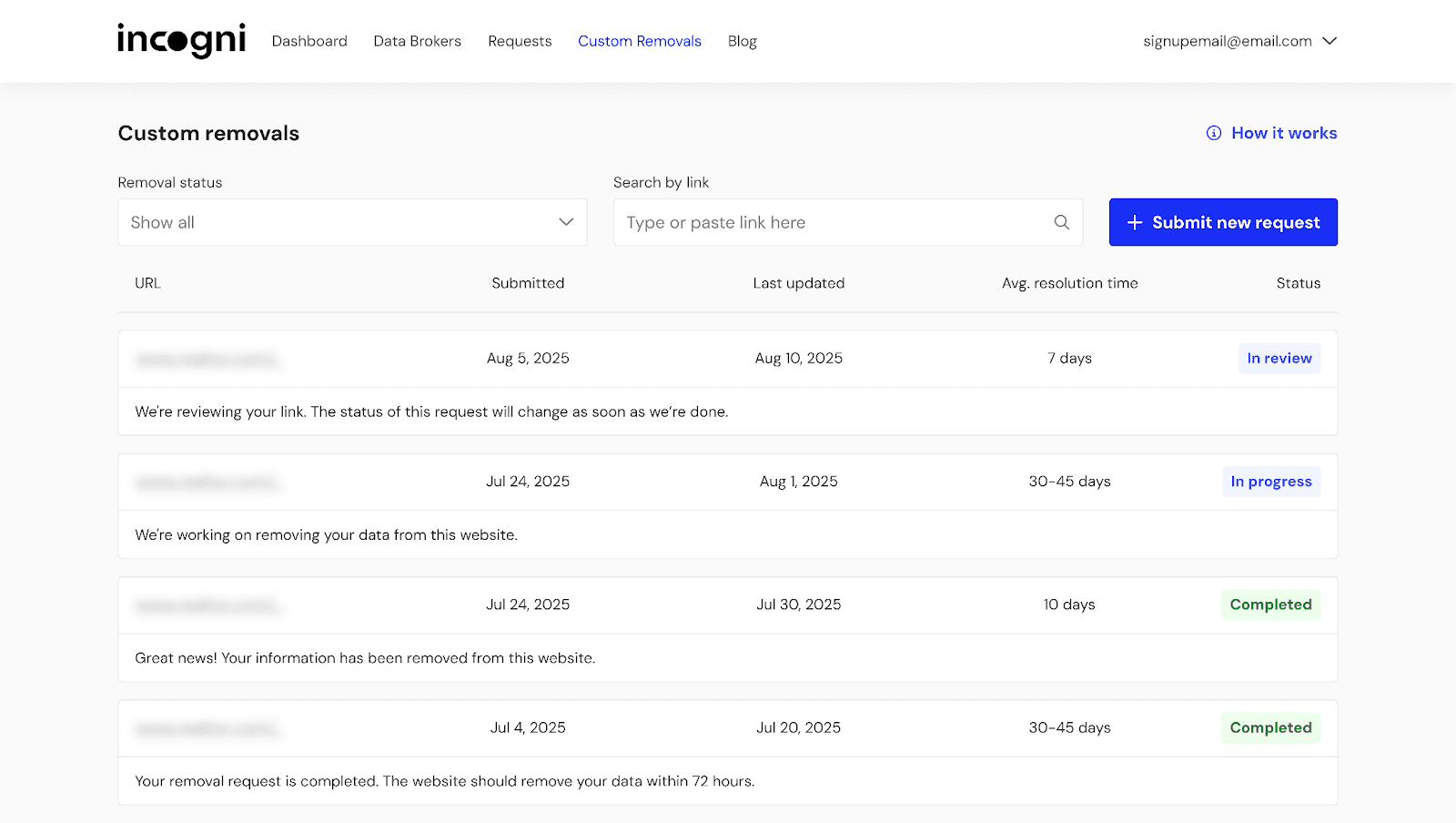
If you prefer technology that just works, Incogni’s design feels refreshing. Once set up, it runs in the background. You can check progress in your dashboard anytime, but there’s nothing you need to do day-to-day.
Optery is more hands-on. It shows you the data it finds, gives you screenshots, and lets you take action manually if you want. That level of visibility appeals to users who need some oversight, but it can also make the process more demanding.
Both interfaces are clean and user-friendly; the main difference is how much involvement they require.
Pros and Cons at a Glance
Incogni:
✅ Fully automated, recurring removals
✅ Covers public and private brokers
✅ Deloitte-assessed process
✅ All the core features available in the cheapest plan
❌ Less visual proof for each deletion
❌ No free plan
Optery:
✅ Transparency with screenshots and logs
✅ Free scan and flexible plans
✅ Clear dashboard and manual control options
❌ Full coverage only with higher-tier plans
❌ No third-party check
❌ Requires more user input
Final Verdict: Which One Protects You Better?
Both Incogni and Optery do what they promise – help you reclaim your personal information from data brokers. The right choice depends on what kind of experience you want.
- Choose Optery if you like to see everything happening in real time and don’t mind being part of the process.
- Choose Incogni if you’d rather automate the entire task and trust the process to keep your data off the market.
If your goal is to finally stop worrying about whether your data will show up again, Incogni is the clear winner.
Incogni vs Aura

Incogni vs Aura: Focused Data Removal or All-in-One Protection?
Personal digital data has become part of modern life – stored by apps, shared by retailers, and traded by data brokers you’ve never heard of. While it’s impossible to stop data circulation entirely, you can reduce your exposure (and probably should, considering the risk of fraud or identity theft).
Two names often come up when you browse for privacy solutions: Incogni and Aura. Both help you take back control of your digital presence, but they work in very different ways. One focuses on keeping your personal data out of broker databases. The other combines data protection with credit monitoring, antivirus tools, and family safety features.
Let’s take a closer look at which one fits your needs best.
At a Glance: Comparing the Essentials
| Feature | Incogni | Aura |
| Starting price (annualized) | $7.99/month | $12/month |
| Core focus | Automated data broker removals | All-in-one identity protection suite |
| Automation | Fully automated, recurring requests | Partly automated, some manual approval |
| Broker coverage | 420+ public and private brokers | Limited, mainly public listings |
| Verification | Deloitte Independent Assurance Assessment | None |
| Extra tools | Data exposure tracking | Credit monitoring, VPN, antivirus, parental controls |
| Support | Email, chat for all subscribers, phone for higher plans | 24/7 phone, chat, and email |
| Best suited for | Set-and-forget privacy protection | Families wanting full digital safety |
Information current as of October 2025)
Approaches to Privacy
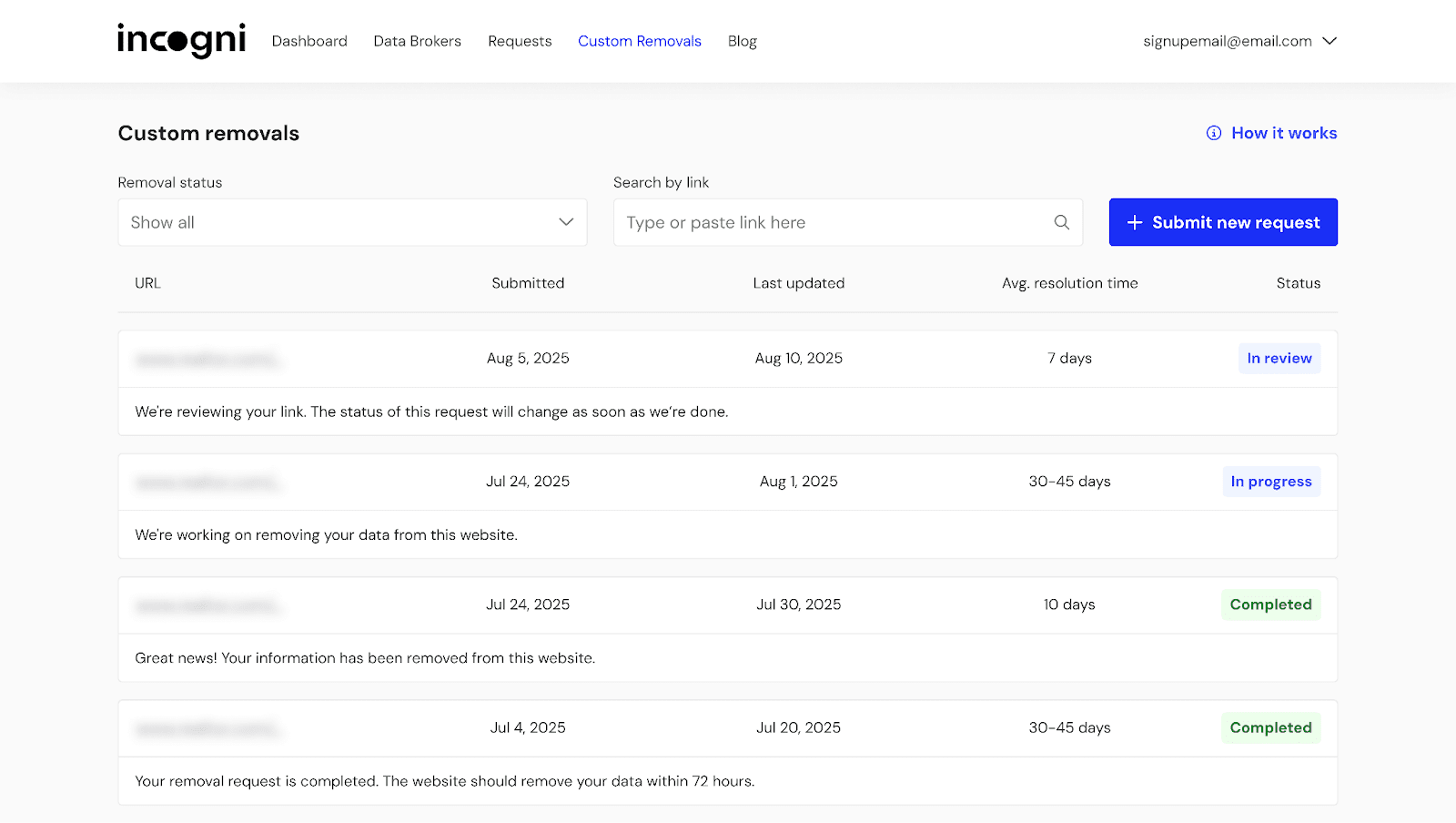
Incogni is a specialist. Its only purpose is to remove your data from data brokers – the companies that buy, store, and sell personal details – and keep it that way. Once authorized, it automatically sends opt-out requests to over 420 brokers and keeps renewing them every 60 or 90 days, depending on the broker type. It’s a long-term, repeating system that maintains your privacy without you having to step in.
Aura is a generalist. It’s more of a digital security suite than a data removal service. Along with broker opt-outs, you get credit monitoring, identity theft alerts, VPN access, antivirus software, and insurance coverage, among other things. Its removal feature is less comprehensive and often requires manual approval to complete.
So, Incogni protects your data at the source, while Aura monitors what happens after your information is already out there.
Coverage
When it comes to where your data is removed from, the difference here is substantial.
Incogni reaches both public and private data brokers, covering industries like marketing, recruitment, risk assessment, and finance. This wider reach goes beyond what you can see on search engines and handles the databases that feed them.
Aura’s coverage is much narrower. Its opt-out tools target mainly public people-search sites, not the private brokers that actually distribute your data across the internet. It partially makes up for this with its other security features, though, but those don’t erase your information, so it’s up to you and your priorities.
Transparency
Privacy tools should be clear about what they’re doing with your data.
Incogni shows progress in a dashboard, where you can see which brokers were contacted and which confirmed deletion. Importantly, its processes have undergone independent limited assurance assessment by Deloitte, confirming the validity of the process. It’s the only major service in the market with this kind of assurance.
Aura, by contrast, focuses on real-time alerts. It will notify you of data breaches, suspicious logins, or compromised passwords. While this helps you react to threats quickly, its data removal feature wasn’t independently checked and doesn’t provide visibility into its effectiveness.

Subscription Pricing
Incogni keeps things simple: all plans include the same level of protection – automated removals, access to 420+ brokers, and custom deletion requests. The starting cost is $7.99 per month (billed annually), with higher tiers offering faster processing, unlimited custom removal requests, or family coverage.
Aura divides its pricing by the number of users and features:
- Individual: $12/month
- Couple: $22/month
- Family: $32/month
There’s also a limited option for kids, costing $10/month.
Each tier bundles tools like VPN, antivirus, and credit monitoring. That’s great if you need a full digital security package, but if you only want your data removed from brokers, you’ll end up paying for extras you may never use.
Usability
Incogni is designed not to attract your attention nor take up your time. Setup takes minutes – verify your identity, sign the authorization form, and let it handle everything automatically. You can log in to check progress anytime, but there’s nothing you need to manage daily. Icogni will work quietly in the background.
Aura involves more interaction. Its platform constantly monitors multiple aspects of your digital life and alerts you when it finds potential issues. It’s informative, but it also means more notifications and tasks to review.
Pros and Cons
| Provider | ✅Pros | ❌Cons |
| Incogni | ✅Fully automated and recurring data removals
✅420+ brokers, public and private ✅Deloitte-assured process ✅Simple, flat pricing |
❌No free tier (there’s a money-back guarantee)
❌Phone support only with Unlimited plans |
| Aura | ✅Full digital safety suite (VPN, antivirus, credit monitoring)
✅24/7 support ✅Strong family and identity theft protection |
❌Limited broker coverage
❌Partly manual removals ❌Higher cost if data removal is your only goal |
Final Verdict: Depth Over Breadth
Aura offers impressive all-around digital protection, especially for families and users who want everything – credit alerts, antivirus, VPN, and insurance – in one place.
But when it comes to removing personal data from brokers, Incogni’s specialization makes all the difference. It focuses on the root of the problem, automates every step, and verifies that it’s working – all for a lower price.
Both are valuable; your choice depends on whether you want prevention or monitoring.
If your main goal is to keep your personal information from being collected and sold again, Incogni provides the most efficient and lasting solution.
Kanary vs Incogni
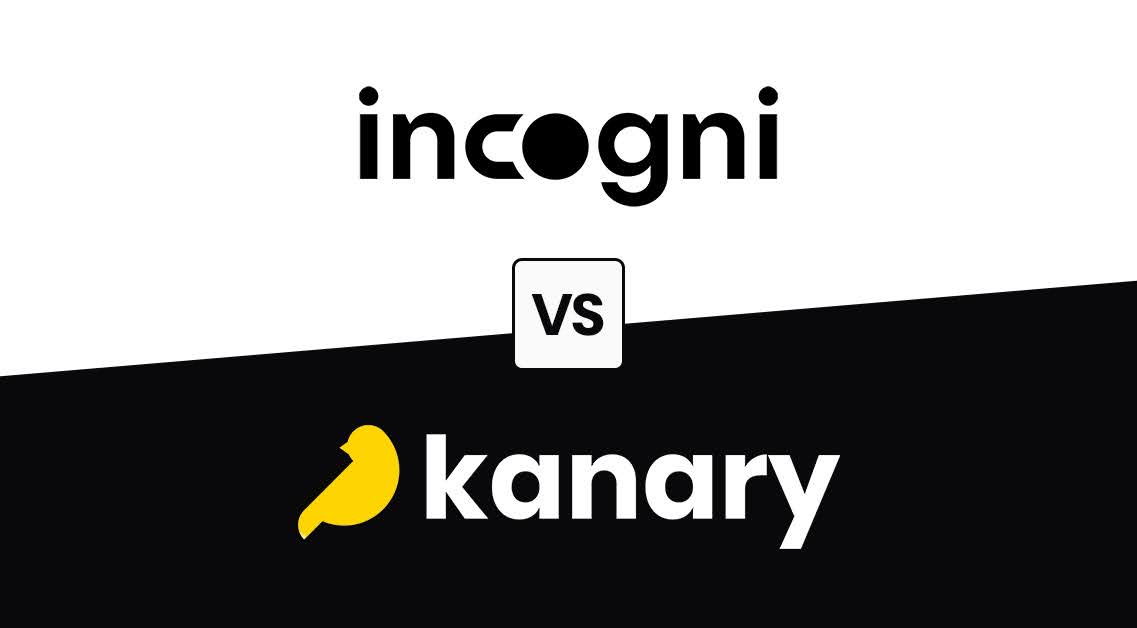
Kanary vs Incogni: Which Data Removal Service Really Delivers?
Your data doesn’t just live in your inbox or social media accounts. It circulates quietly through the web because of hundreds of data brokers, fueling targeted ads, identity profiles, and background reports. The consequences may quickly become irritating, problematic, or even dangerous.
So, if you’re ready to reclaim that information, some services promise to help, including Kanary and Incogni.
Both work to get your personal data deleted from broker databases, but they do it in very different ways. Kanary gives you hands-on visibility and education about where your data goes. Incogni focuses on efficiency, automating removals, and keeping your information off the market over time.
Let’s unpack what sets them apart.
Two Paths to the Same Goal
Privacy tools often fall into two categories: those that teach you how things work, and those that quietly do the work for you. Kanary fits the first description, Incogni the second.
Kanary is built as a guided experience. You can see every site it checks, every listing it finds, and what actions it takes. It even walks you through verifications if a broker needs manual confirmation. You always know what’s happening, but it can take time to manage everything.
Incogni, on the other hand, is all about removing effort from the process. Once you create your account and give authorization, it starts contacting more than 420 brokers – from people-search sites to marketing and financial databases – and keeps sending follow-ups automatically whenever needed.
Comparing the Basics
| Feature | Incogni | Kanary |
| Pricing (when billed annually) | From $7.99/month | Free basic tier, then $14.99/month |
| Automation level | Fully automated, recurring requests | Partially automated, requires input for some sites |
| Coverage | 420+ brokers (public, private) | 300+ public brokers and platforms |
| Verification | Independently assessed by Deloitte | No third-party verification |
| Platform | Web-based dashboard | Web-based or mobile app (iOS or Android) |
| Support | Email, live chat for subscribers (phone for top plans only) | Email, chat, community support |
| Focus | Broad, continuous data removal | Visibility and educational guidance |
Accurate as of October 2025
Scope of Protection
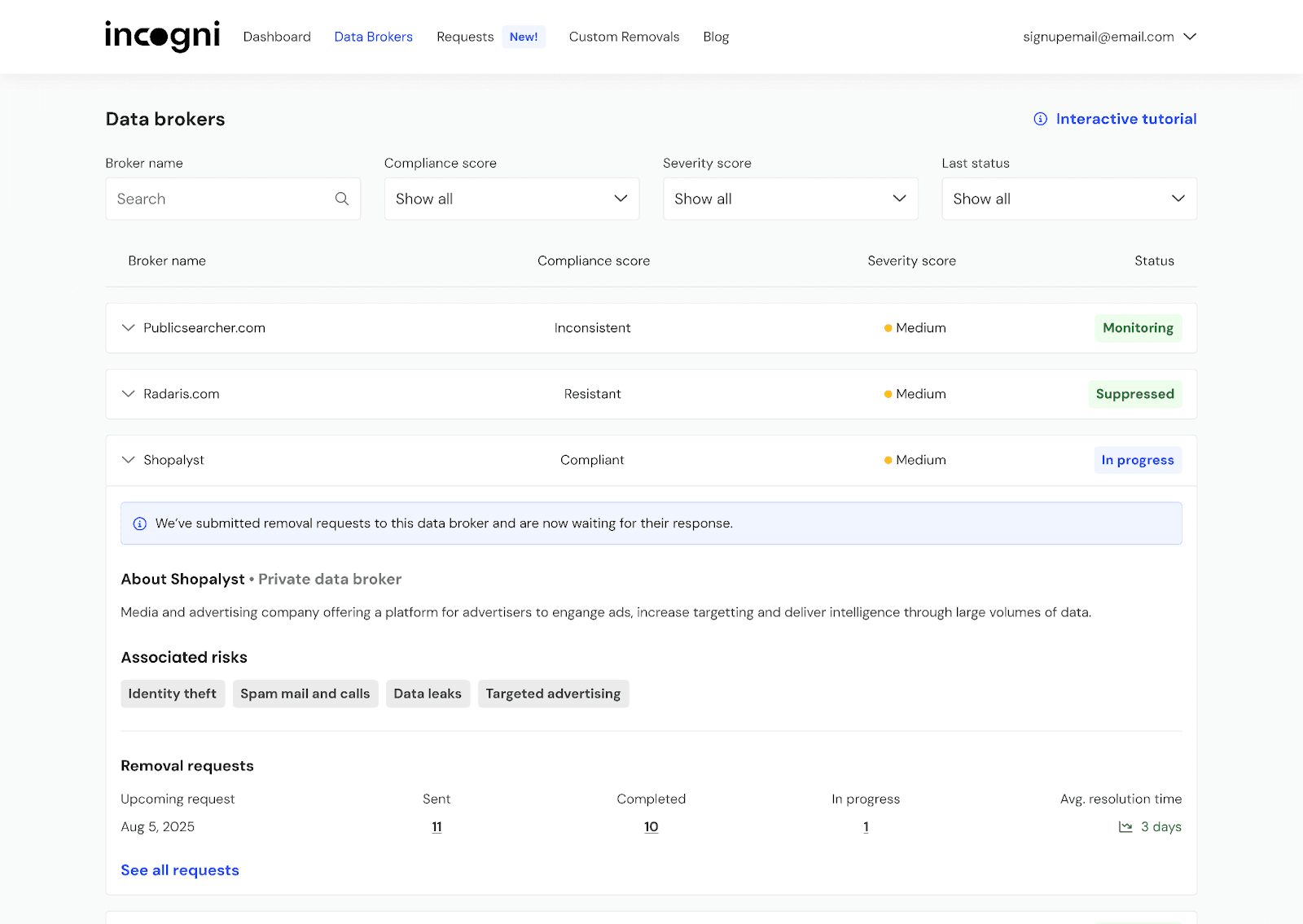
Incogni reaches far beyond public listings (what you can find on Google). Its network includes marketing, recruitment, financial, and risk-assessment brokers, the hidden players that quietly distribute personal data to other companies. Incogni also renews removal requests every 60 to 90 days to ensure your data stays out of circulation.
Kanary focuses mainly on public and semi-public data sources: people-search directories, social media, and exposed email databases. This makes it useful for cleaning up what others can easily find about you, but it doesn’t address the deeper data trade happening behind the scenes.
If your concern is visibility – what’s online right now – Kanary will work. But if you care about exposure at the source, Incogni offers the broader safety net.
User Experience: Engagement vs Ease
Kanary operates mostly through its mobile app. It alerts you whenever your information shows up somewhere new, then gives you options to act on it: approve a removal, review a profile, or learn how a broker got your data. It feels interactive and educational, but it also means you’re part of the process.
Incogni is more of a background system. After a short setup, it starts working automatically and keeps going without further input from your part. You can log in anytime to see what’s been done, but you don’t need to manage anything manually on a daily basis.
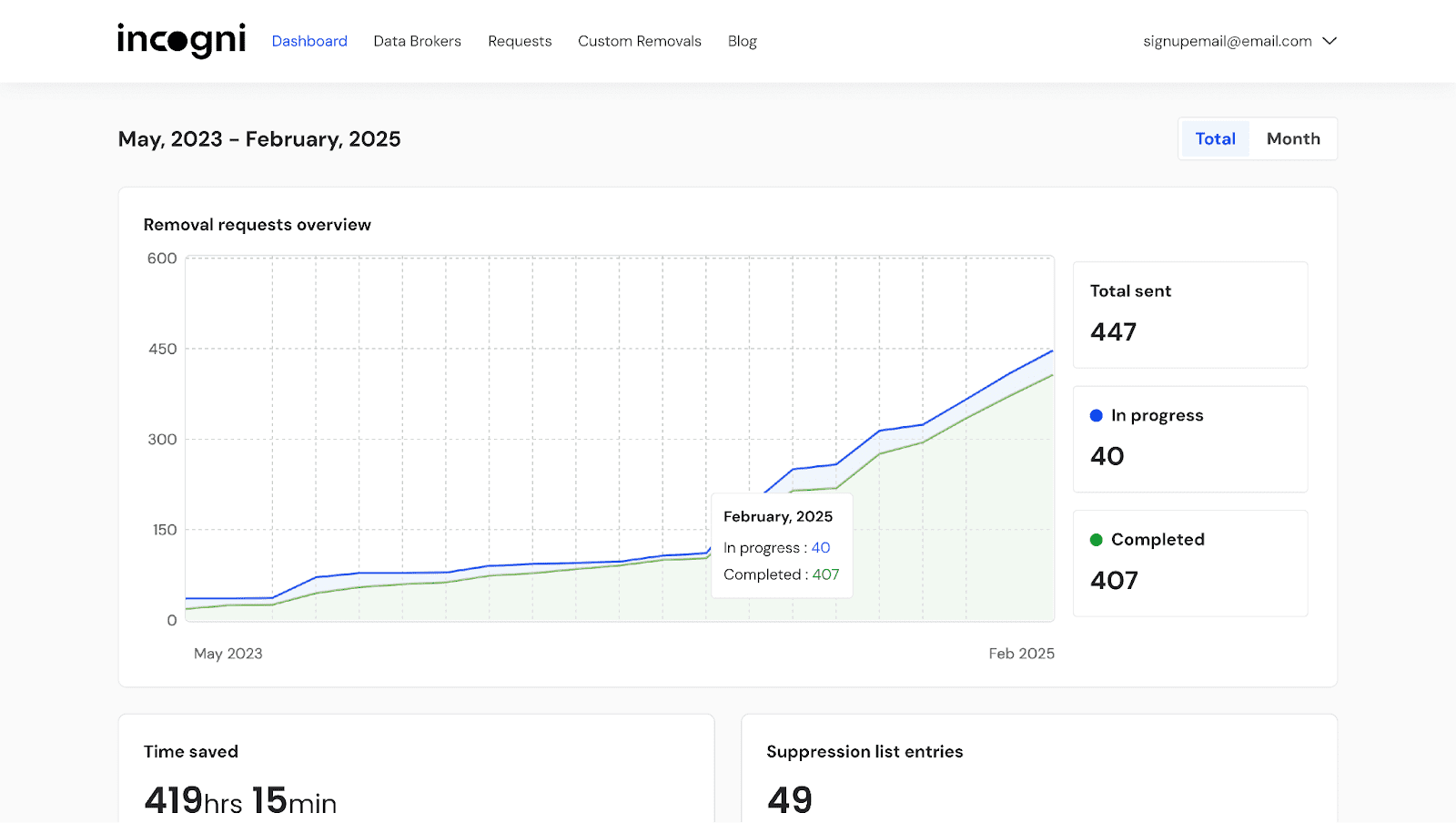
The Matter of Trust
Kanary’s strength lies in its openness. You can track each removal and see logs of where your information was found and what was done with it. The company also emphasizes data ethics, i.e., your information stays on your device, and it’s backed by early investment from Mozilla, the team behind Firefox. That’s a meaningful sign of credibility.
Incogni takes a more formal route to transparency. Its claims have undergone independent limited assurance assessment by Deloitte, confirming that its automated removals are carried out as promised. It also publishes live metrics, including broker coverage and total confirmed deletions, through its Trust Center.
In other words, Kanary shows transparency through access, while Incogni proves it through accountability.
Plans and Pricing
Kanary offers a free version so anyone can scan their exposure and try limited removals. Its Premium plan costs from $14.99 per month, allowing deeper coverage, unlimited searches, and protection for multiple emails and phone numbers. Family add-ons are discounted.
Incogni doesn’t have a free tier but offers full automation and recurring removals at $7.99 per month (annualized). There’s also a 30-day money-back guarantee. All essential features – broker coverage, private data removals, and progress tracking – are available even at the base level. Higher plans add faster processing, unlimited custom removal requests, and multi-user options, but the protection remains the same across the board.
Strengths and Drawbacks
Incogni
What works:
- Fully automated – no manual tasks
- 420+ brokers across multiple industries
- Independent limited assurance assessment by Deloitte
- Simple, transparent pricing
What could improve:
- No free version
- Limited visual proof for private brokers
- Phone support only for Unlimited subscribers
Kanary
What works:
- Free access for light users
- Strong data ethics and transparency
- Clear progress logs and educational design
What could improve:
- Coverage limited to public data sources
- Some removals still require user input
- The premium plan costs more per month
Final Verdict: Choosing Between Control and Convenience
Both Kanary and Incogni help you take back control of your personal data, but they do it in different ways.
Kanary is ideal if you want to stay involved, tracking your exposure, understanding where your data appears, and taking part in the cleanup process. Its transparency and educational approach make it a good fit for anyone new to privacy tools or those who like to see every step of the process.
Incogni, in contrast, is built for simplicity and depth. It handles removals automatically, covering a much wider range of brokers, including private and hard-to-reach databases, and keeps them updated over time. Once you set it up, it just works.
Kanary shows you what’s happening; Incogni prevents it from happening again. Both make privacy easier, but if you want lasting protection without the effort, Incogni’s automation and verified reach make it the stronger long-term choice.
Incogni vs OneRep

Incogni vs OneRep: What Kind of Privacy Protection Really Works?
The more time you spend online, the more of your personal information ends up in places you don’t want it. Data brokers gather names, emails, phone numbers, and even behavioral details – and those records are constantly bought, sold, and reused for a variety of purposes, none of them beneficial to you.
For most people, finding and removing that data manually isn’t realistic. That’s where data removal tools come in. Incogni and OneRep are two well-known options, both promising to erase your details from the web. But they don’t protect you in the same way.
A Quick Look at the Essentials
| Aspect | Incogni | OneRep |
| Price (billed annually) | From $7.99/month | From $8.33/month (5-day free trial) |
| Scope | 420+ public and private brokers | ~230 public people-search sites |
| Automation | Fully automated, recurring removals | Partly automated; some manual steps |
| Verification | Independently assessed by Deloitte | None |
| Focus | Deep, ongoing privacy protection | Search result cleanup |
| Support | Email, chat + phone (upper tiers) | Email and ticket system |
Correct as of October 2025
Two Services, Two Philosophies
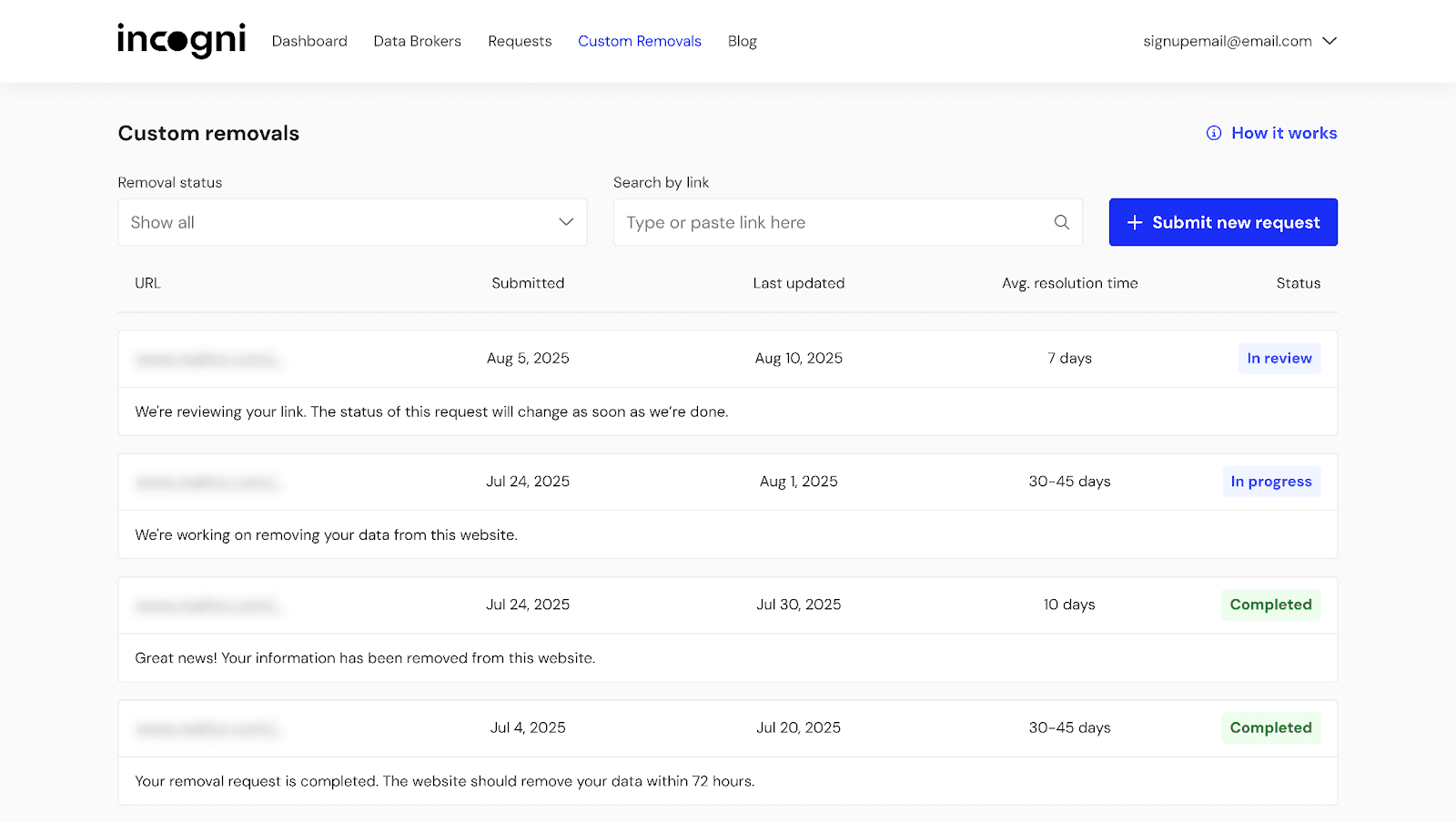
OneRep treats data privacy as a visibility issue. Its focus is on public people-search websites – those that make your contact details show up in Google results. You sign up, it finds your listings, sends opt-out requests, and rechecks them regularly. The process works, but it mostly targets what’s visible.
Incogni takes a broader, systemic approach. Instead of limiting itself to public listings, it also contacts private data brokers, companies that collect information for marketing, risk scoring, and identity profiling. These are the networks that keep selling and resharing your personal data, even when you think it’s gone. Incogni’s system automates opt-outs and re-sends them every 60–90 days to prevent data from creeping back online.
The Trust Factor
Transparency is critical when you’re trusting a company with your personal data.
OneRep makes its process easy to see: you can log in and watch which listings are suppressed and which are pending. However, the company’s industry connections have drawn scrutiny.
A KrebsOnSecurity investigation revealed that OneRep’s founder had previously created several people-search sites – the same kind of services OneRep now removes listings from. The company has clarified its independence since then, but it illustrates how blurred the line can be between data broker and data remover.
Incogni, on the other hand, builds trust differently. It’s one of the few services with an independent assessment. Deloitte checked its system and confirmed that Incogni’s processes work as claimed.
Coverage: The Visible and the Invisible
OneRep works with roughly 230 people-search sites. It’s effective for public information that anyone can find, which helps reduce spam, cold calls, and exposure in search results.
Incogni reaches over 420 brokers, including those you’ll never find in search engines. These include marketing data resellers, recruitment networks, credit pre-screening agencies, and risk-analysis platforms. Removing your data from these systems doesn’t just hide it; it may stop it from being sold again later.

Ease of Use
OneRep guides you step-by-step. You’ll see exactly which sites your data appears on and what’s being done about it. When a broker requires manual confirmation, though, you’ll need to handle that part yourself.
Incogni is nearly effortless. After you verify your identity, it sends requests automatically and keeps monitoring results in the background. You can check progress whenever you want, but usually, you don’t have to intervene.
Pricing and Value
Price-wise, there’s not much separating them, but what you get for the money matters.
OneRep costs about $8.33/month when billed annually and also includes a short free trial. Family and multi-user plans come at a premium.
Incogni starts slightly lower, at $7.99/month (annualized). Every plan includes full coverage, ongoing automation, and recurring removals. Upgrades only add faster processing and family bundles, not access to more brokers.
OneRep gives you a narrower, hands-on experience. Incogni offers full automation and double the reach for roughly the same cost.
Pros and Cons
| Provider | Strengths | Weaknesses |
| Incogni | – Fully automated, recurring deletions
– 420+ public and private brokers – Independent limited Deloitte assessment – No manual follow-up required |
– No free plan or trial (but a 30-day money-back guarantee) – Fewer visual “before/after” confirmations– Phone support only for Unlimited users |
| OneRep | – Effective at removing public listings
– Clear, simple dashboard – Free 5-day trial for testing |
– Limited to public data sources – Some removals require manual action – No independent verification –Reported founder ties to data broker industry |
Final Verdict: Which Service Truly Protects Your Privacy
Both Icogni and OneRep may be your allies in your mission to guard your online privacy. However, you need to consider your goals and priorities.
If you want to remove personal details from search engines and public directories, OneRep gets the job done. It’s clear, visual, and gives you proof of progress – perfect if your focus is on how your data appears to others.
If you want to address the root of the problem – the buying, selling, and constant recycling of your information by private brokers – Incogni is built for that. Its automation, verified processes, and ongoing monitoring mean your data stays off the market, not just out of sight.
All in all, you could say that OneRep helps you look private, while Incogni helps you stay private. Both make privacy easier to manage, but for lasting protection and genuine peace of mind, Incogni stands out as the more complete, future-proof choice.

Source: Top Data Broker Removal Services: Which One Really Protects Your Privacy?




